
- Home
- News
- Analysis
- States
- Perspective
- Videos
- Education
- Entertainment
- Elections
- World Cup 2023
- Features
- Health
- Business
- Series
- Economy Series
- Earth Day
- Kashmir’s Frozen Turbulence
- India@75
- The legend of Ramjanmabhoomi
- Liberalisation@30
- How to tame a dragon
- Celebrating biodiversity
- Farm Matters
- 50 days of solitude
- Bringing Migrants Home
- Budget 2020
- Jharkhand Votes
- The Federal Investigates
- The Federal Impact
- Vanishing Sand
- Gandhi @ 150
- Andhra Today
- Field report
- Operation Gulmarg
- Pandemic @1 Mn in India
- The Federal Year-End
- The Zero Year
- Premium
- Science
- Brand studio
- Home
- NewsNews
- Analysis
- StatesStates
- PerspectivePerspective
- VideosVideos
- Entertainment
- ElectionsElections
- Sports
- Loading...
Sports - Features
- BusinessBusiness
- Premium
- Loading...
Premium
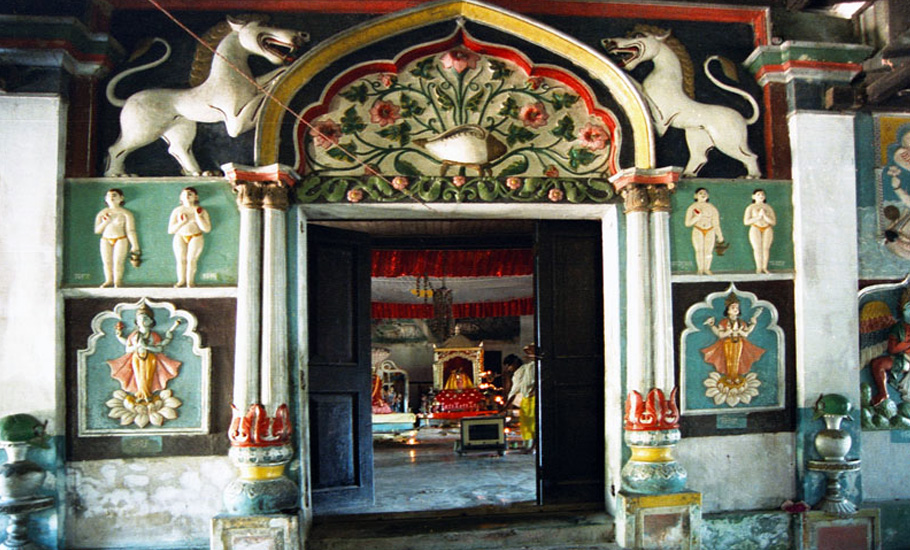
Elections or not, Assam's Sattras are a political hotspot

Bordowa is a small village located some 18 kilometres north-west of Assam’s bustling and chaotic town of Nagaon. With its modest houses, sprawling courtyard surrounded with betel nut trees and leisurely pace of life, Bordowa is indiscernible from any other ordinary Assam village for the uninitiated. This ordinary-looking village has been the cynosure of political parties this election...
Bordowa is a small village located some 18 kilometres north-west of Assam’s bustling and chaotic town of Nagaon.
With its modest houses, sprawling courtyard surrounded with betel nut trees and leisurely pace of life, Bordowa is indiscernible from any other ordinary Assam village for the uninitiated.
This ordinary-looking village has been the cynosure of political parties this election season that ended on April 6 with three-phase polling in Assam.
On February 25, a day before the announcement of election schedule, BJP leader and Union Home Minister Amit Shah dashed to the village to launch a beautification project worth around ₹180 crore.
Barely two weeks prior to Shah’s visit, the BJP’s principal rival in the state, the Congress, had descended on the village in full strength.
The Congress picked the place to launch its election campaign with “Asom Basaon Ahok” (Come, Let’s Save Assam) yatra on February 13.
Held against the backdrop of a massive statewide protest against the enactment of the Citizenship Amendment Act, Assamese identity was one of the key themes in this election.
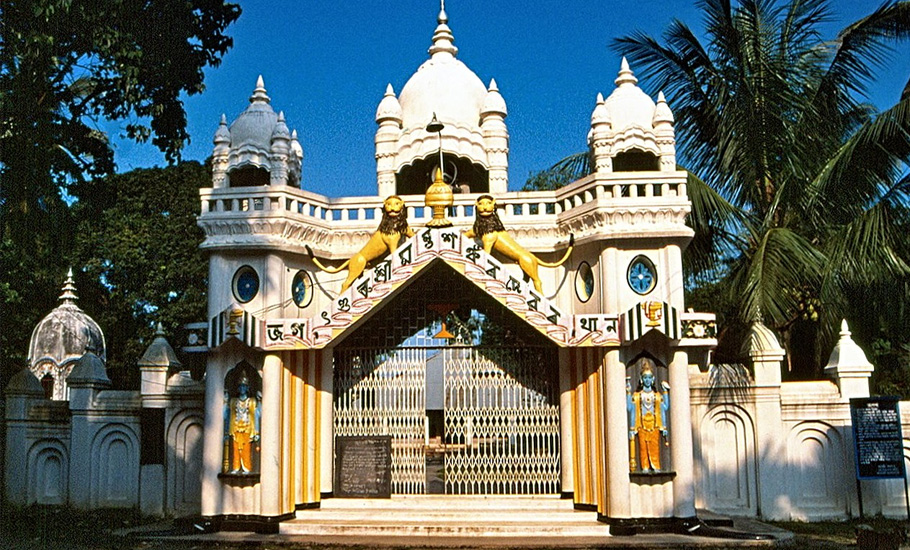
Birthplace of sattra identity
In this identity politics woven around protection of Assamese ‘sanskriti’ (culture), Bordowa naturally hogged the limelight for being the birthplace of a neo-Vaishnavite movement that largely shaped the socio-cultural ethos of modern-day Assam.
In this village on a new-moon lit midnight in 1449, Srimanta Sankardev was born. The 15th-16th century saint-scholar and socio-religious reformer, started the neo-Vaishnavite movement that had a big influence on two medieval kingdoms—Koch and the Ahom—that ruled a large part of present-day Assam.
Sankardev’s religious propagation was the regional expression of Bhakti movement being spread elsewhere in the country against the existing Brahamanical ritualism and caste rigidity.
With his religious movement called eka-sharana-naam-dharma, Sankardev tried to build an egalitarian society. His teaching laid emphasis on prayer and chanting (naam) instead of idol worship.
“His preaching was based on the four components of deva (deity), naam (prayers), guru (teacher) and bhakats (devotees),” said Pitambar Dev Goswami, the satradhikar of Auniati Sattra in Majuli district, a riverine island on Brahmaputra.
One of the most “significant, distinguished and unrestrained” character of Sankardev’s initiatives in Assam from the pan-India Bhakti movement was its Sattra system, according to historian Mamoni Sarma.
Sattras are Vaishnavite monasteries that serve as socio-religious and cultural centres now found in almost all Assamese villages in Brahmaputra Valley.
“There are around 1,500 sattras in the state now promoting Sankardeva’s religious preaching through music (borgeet), dance (sattriya) and plays (bhauna),” said Dev Goswami.
“Sattras were established as the centers of new consciousness. Satras framed moral laws and controlled the activities of the society. These institutions are a unique feature in the cultural environment of Assam,” Sarma said.
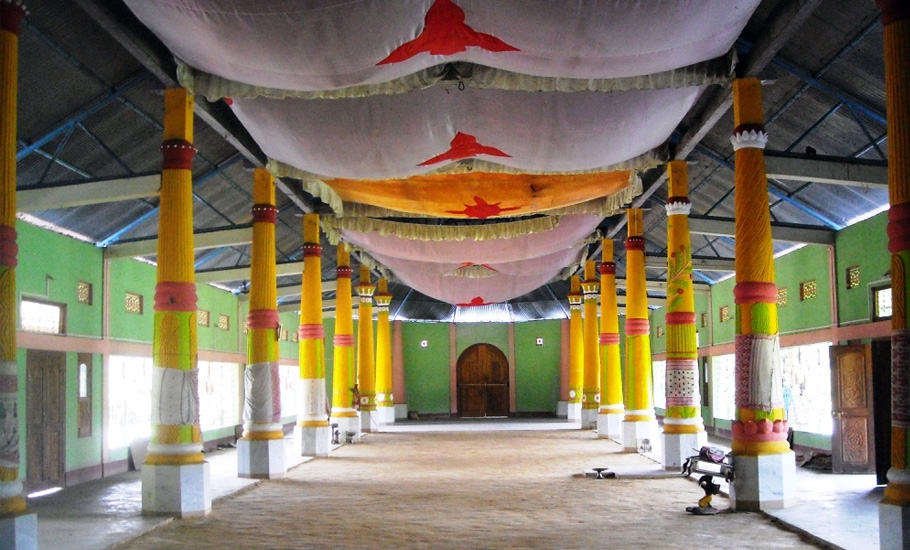
A typical Sattra hosts in its gated premise a rectangular prayer-hall called Namghar aligned at the east-west direction and a sanctum sanctorum where a wooden altar is placed. The altar usually has a copy of the Bhagavat Purana or an idol of Gopala (Krishna).
In the bigger Sattras there are residential enclosures for bhakats, satradhikar and other inmates. Each Sattra is headed by a satradhikar.
Sankaradev established first Sattra at Bardowa, his birthplace, where political parties recently beelined in the run up to the elections.
Political significance of the Sattras is however nothing new. Many historians even attribute the fall of the mighty Ahom kingdom that had successfully thwarted Mughal aggressions to a Sattra uprising in the 18th century.
The power struggle between the Moamorias, the adherents of the Moamara Sattra, and the Ahom kings is documented as Moamoria rebellion in which about one half of the population of the kingdom perished and the economy was totally destroyed.
The Moamoria rebellion demonstrated the influence Sattras wielded in the society.
The Sattras have succeeded in retaining much of that influence even today as almost all Assamese Hindu families are associated with one Sattra, or the other.
Auniati Sattra in Majuli has around 10 lakh devotees, whose regular subscription forms a substantial part of its revenue, said Dev Goswami.
Political influence
It’s because of this huge base of devotees that Sattras and satradikhars are always wooed by politicians of all hues.
The Sattra politics, however, assumed a new dimension since 2016 when the BJP made allegations of “encroachment” of Sattra land by “illegal Bangladeshi migrants” as one of its main poll planks and vowed to promote and protect the unique socio-religious tradition.
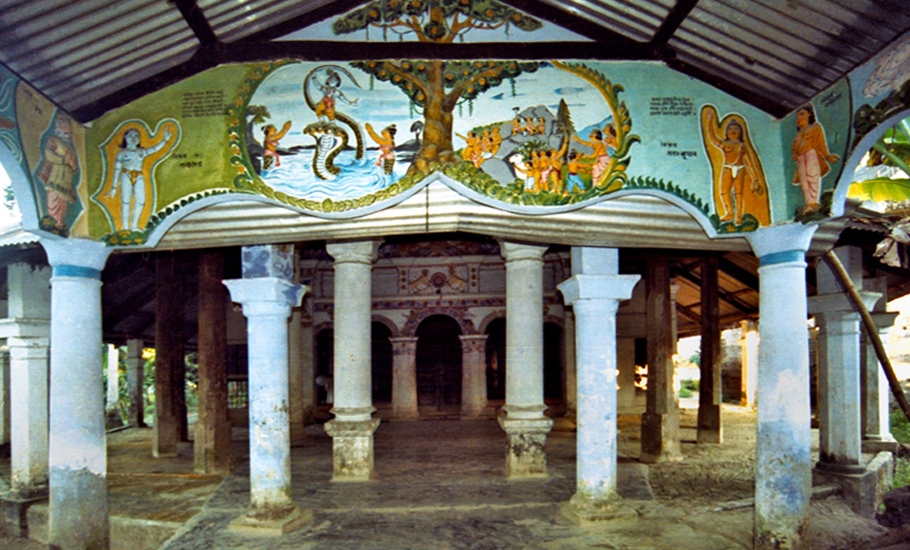
The BJP’s Sattra push had influenced many Sattradhikars to tilt towards the party. The Congress had then even alleged that RSS-BJP combine had prevented Rahul Gandhi from visiting a Sattra in Barpeta, an allegation Sattras vehemently denied.
“There may be a few influenced by any particular ideology. But the Sattras by and large are free from such influence,” Dev Goswami said.
He, however, adds that the Sattras have close association with Vishwa Hindu Parishad (VHP). “We participate in VHP meetings,” he added.
The VHP is an affiliate of the RSS.
Such association, however, did not bring much change in Sattras even after the formation of a BJP government in the state in 2016.
Five years since, the encroachment of Sattra land continues to be a burning issue.
According to Assam Sattra Mahasabha, the apex body of all Sattras, over 7,000 bighas of its land have been encroached.
“In some places, the present government has evicted encroachers from Sattra land. But lots need to be done,” according to Dev Goswami.
Only in 2019, three years after it came to power, the BJP government initiated a law to empower the deputy commissioners to free the sattra lands from encroachment.
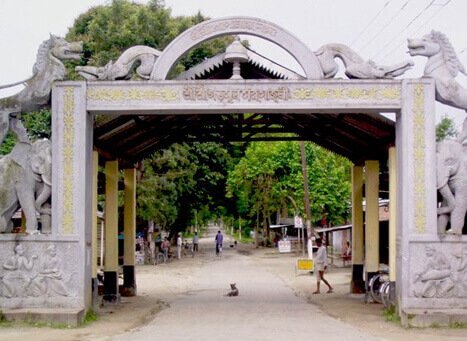
Just before elections, the Assam government also announced to provide ₹2.5 lakh each to around 8,000 naamghars in the state. During his visit to Bordowa, Amit Shah said the number of beneficiaries should be increased to 25,000.
The ₹180-crore beautification project launched by Shah aims at developing the place as a centre of art, culture, research and spirituality in honour of Sankardev, the BJP claimed.
Pranjal Sarma, a resident of Nagaon and a devotee of Bordowa Sattra, said nothing much should be expected of such poll promises.
“Every election, we hear such promises. After elections they are put into the closet only to be brought out during the next elections,” said Sarma (75), a retired teacher.
“Tell me who knows Sattras or Assam Vaisnavite culture outside the Northeast. What steps have the successive governments taken to promote this unique heritage beyond Assam,” he asks.
Dev Goswami admitted that tourism potential of Sattras remains unexploited.

